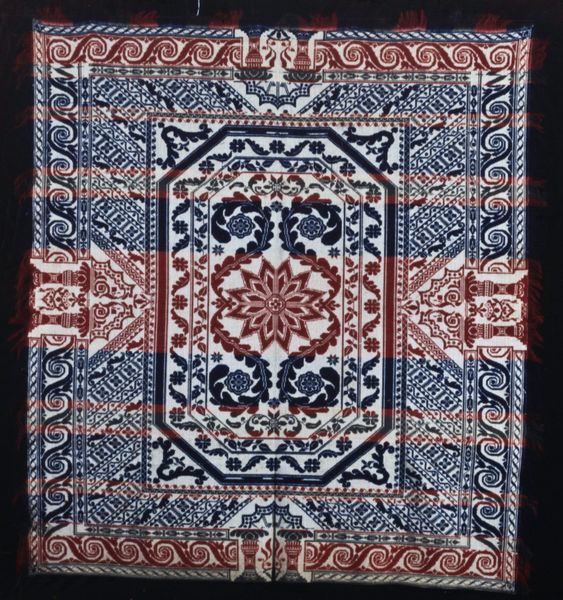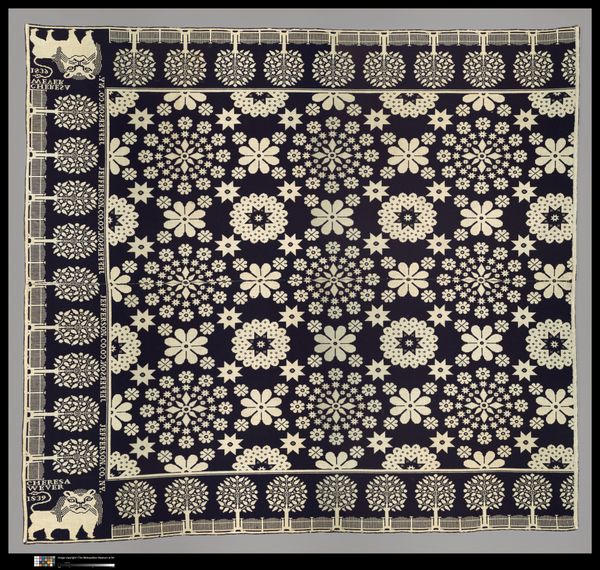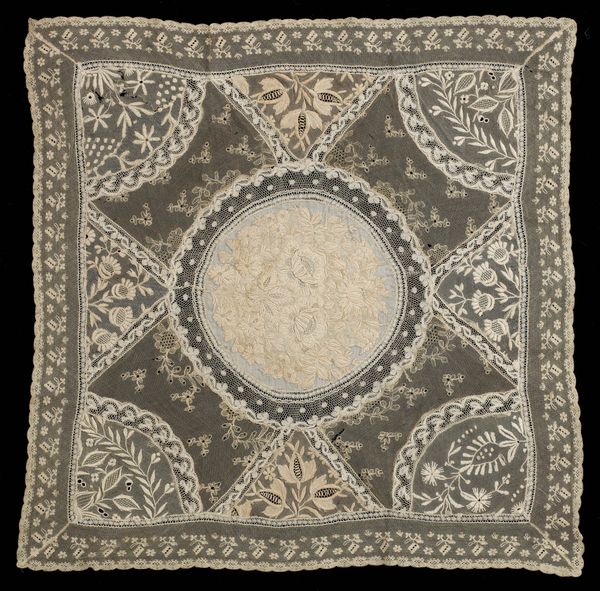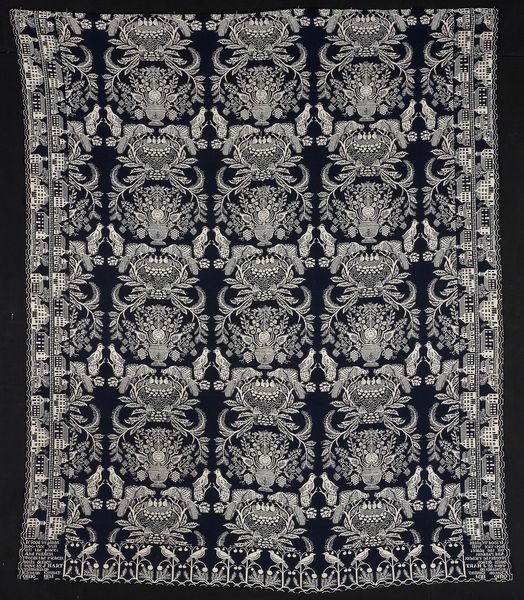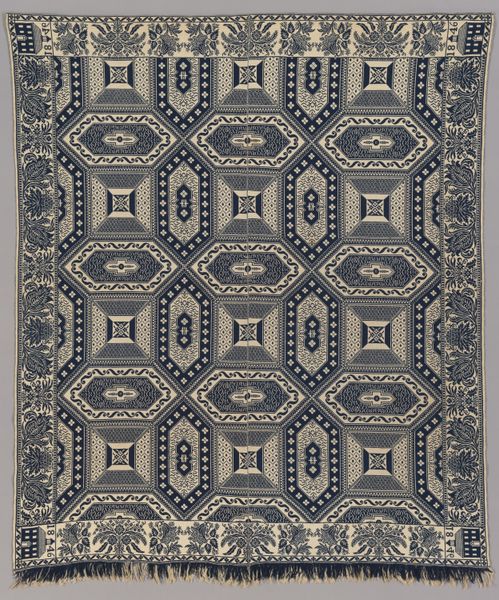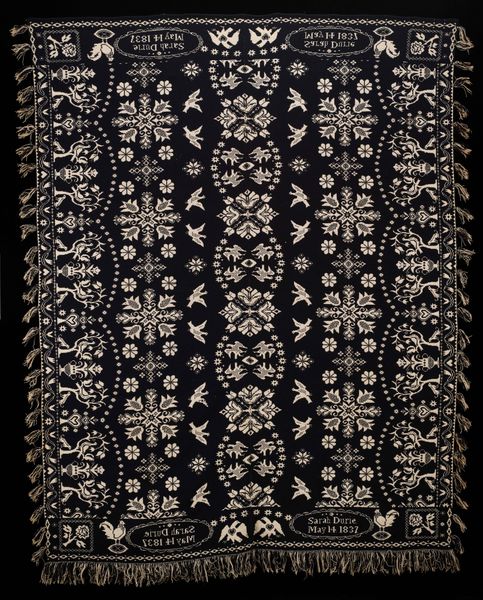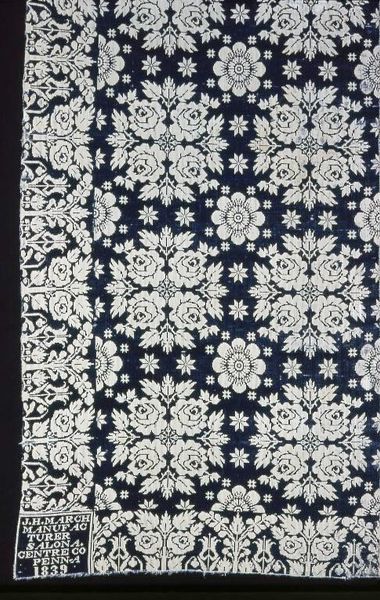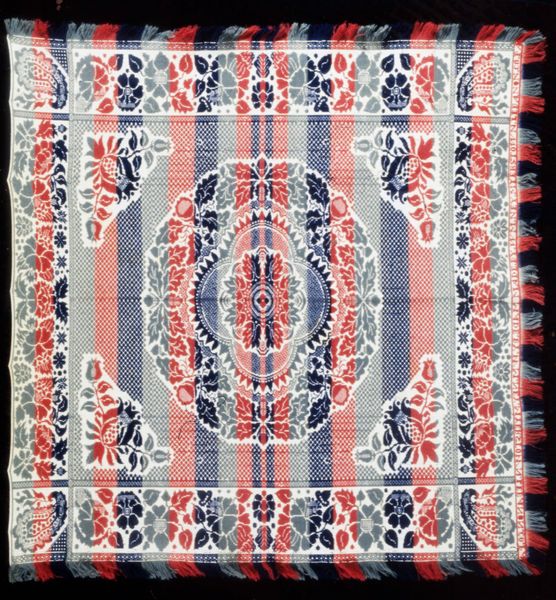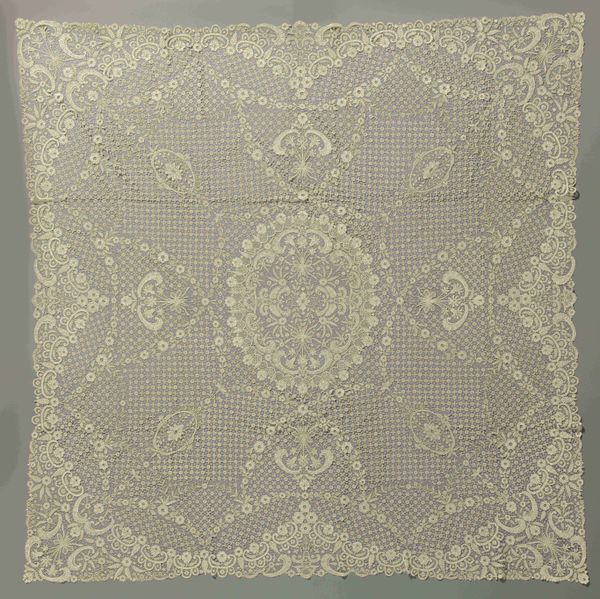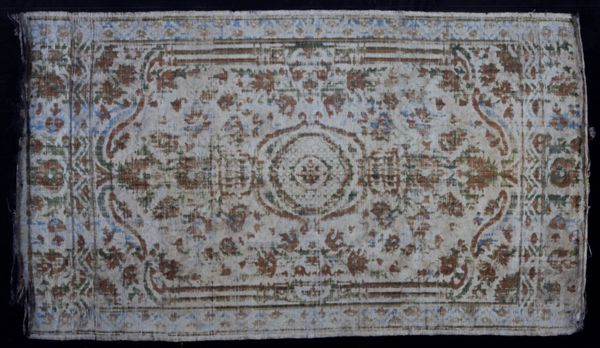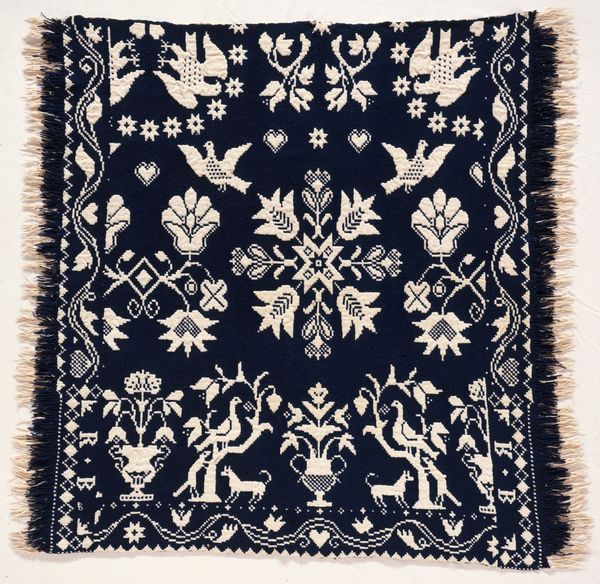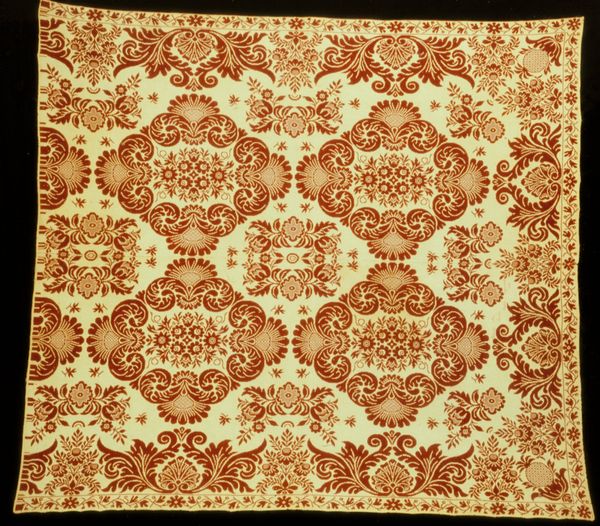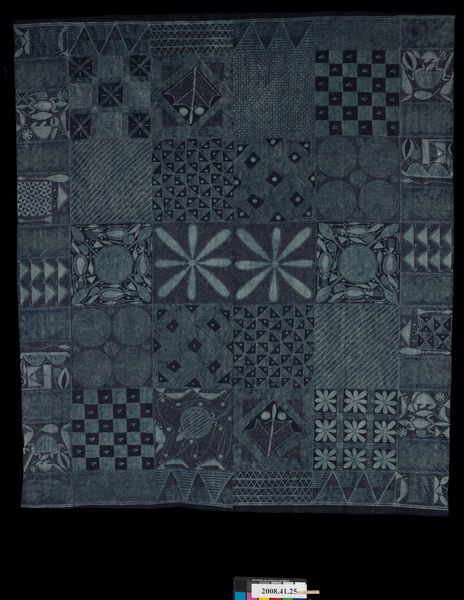
fibre-art, weaving, textile, wool
#
fibre-art
#
pattern
#
pattern
#
weaving
#
textile
#
wool
#
united-states
#
intricate pattern
#
decorative-art
Dimensions: 78 1/2 x 78 1/2 in. (199.39 x 199.4 cm)
Copyright: Public Domain
Curator: What immediately strikes me about this Jacquard Coverlet from the 19th century is the incredible labor it represents. Just consider the intense process of weaving such an intricate design, and using wool, no less! Editor: The density of pattern certainly speaks to that, doesn't it? The meticulous rendering of these floral and geometric motifs layered in a monochromatic palette of blue is very calming, yet the historical weight is palpable, whispering tales of social and personal meaning. Curator: Exactly. This wasn't just a functional object; it's a product of technological advancement of the time and an expression of domestic industry and perhaps a burgeoning merchant class expressing its values through décor. The Jacquard loom, its means of production, really democratized pattern-making. Editor: Absolutely. In the context of 19th-century United States, this textile transcends simple ornamentation. Given the cultural narratives that intersect in cloth – tradition, gender roles, labor – how do you see this piece challenging or reinforcing societal expectations for women and labor, considering it likely was a female task? Curator: Woven textiles were a substantial contribution to domestic economies but greatly undervalued at the time. Women utilized textile production as a medium for agency despite constraints they might have experienced due to imposed gender norms. We could speculate on whose labor produced it; how might that complicate readings around comfort or domesticity? Editor: Considering materiality, the heaviness of the wool contributes to both the visual weight and also the sheer physicality of labor, as a social signal about quality and abundance but it's a coded aesthetic. The intricate pattern itself mirrors a specific labor and class, but also evokes conversations around commerce. How the mechanization of fabric through the Jacquard process influenced women’s access to artistry opens broader perspectives, right? Curator: Certainly. By examining the tools of production and materials we're given insight into the nexus of design and its ability to shape personal narratives, histories and class distinctions, right in our homes. Editor: A potent reminder that even the most functional objects hold complex cultural narratives woven within their threads. Curator: Absolutely. And a powerful argument for studying art through the lens of its creation, to understand its many dimensions.
Comments
No comments
Be the first to comment and join the conversation on the ultimate creative platform.
